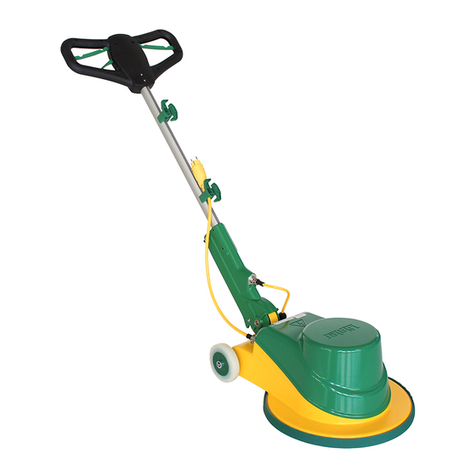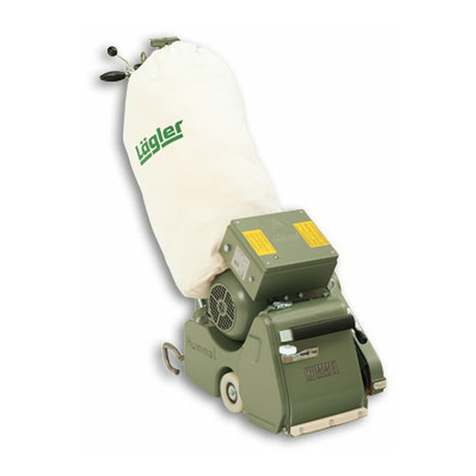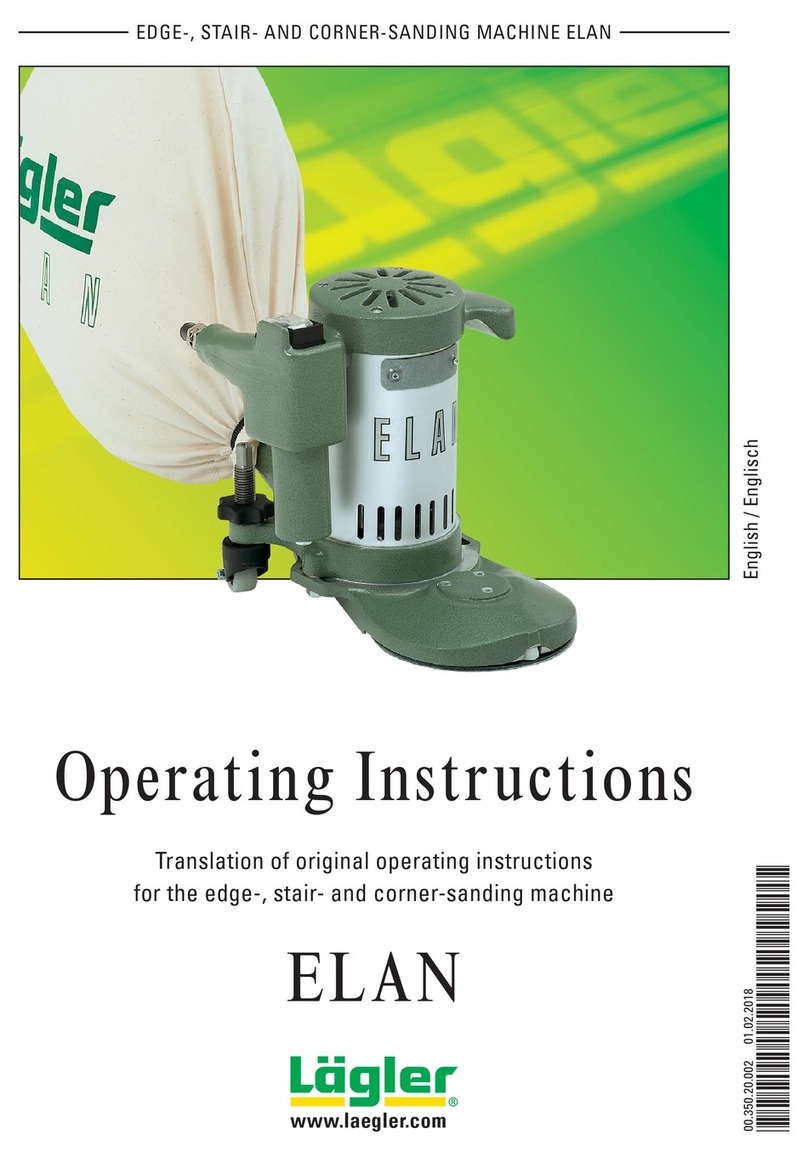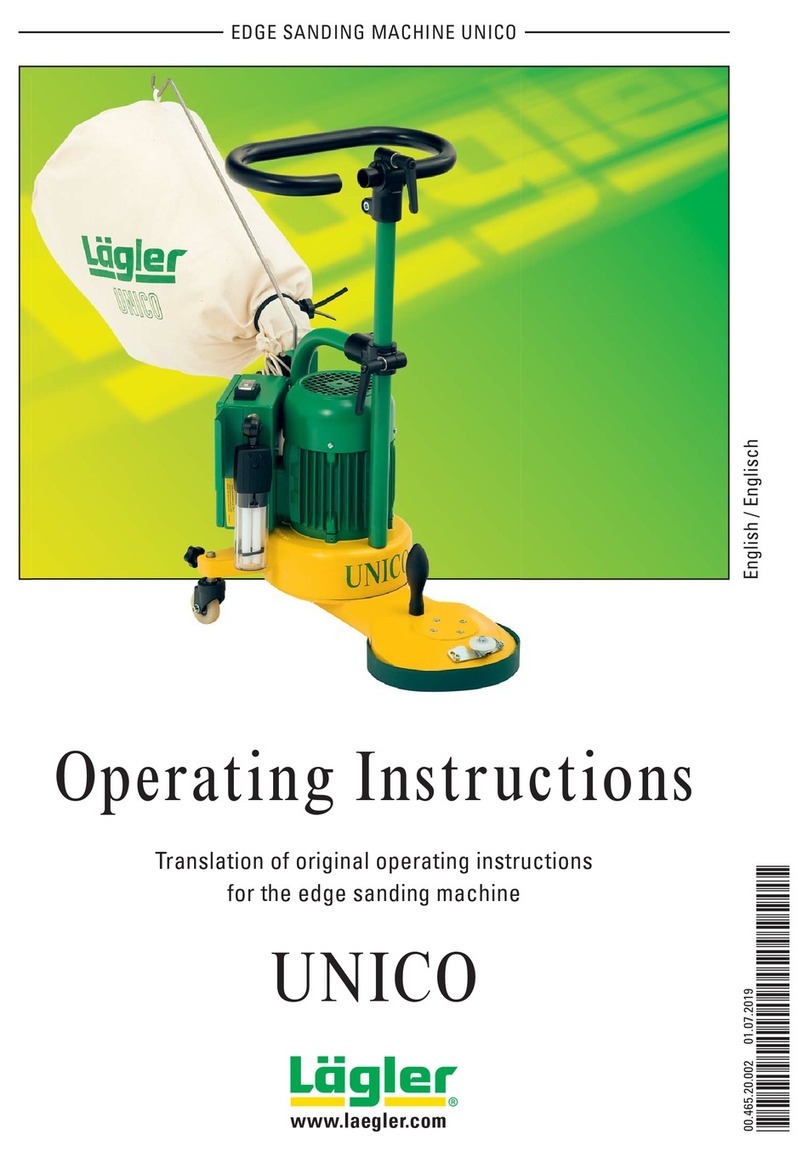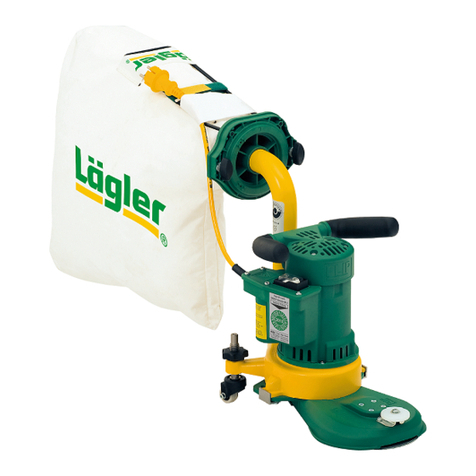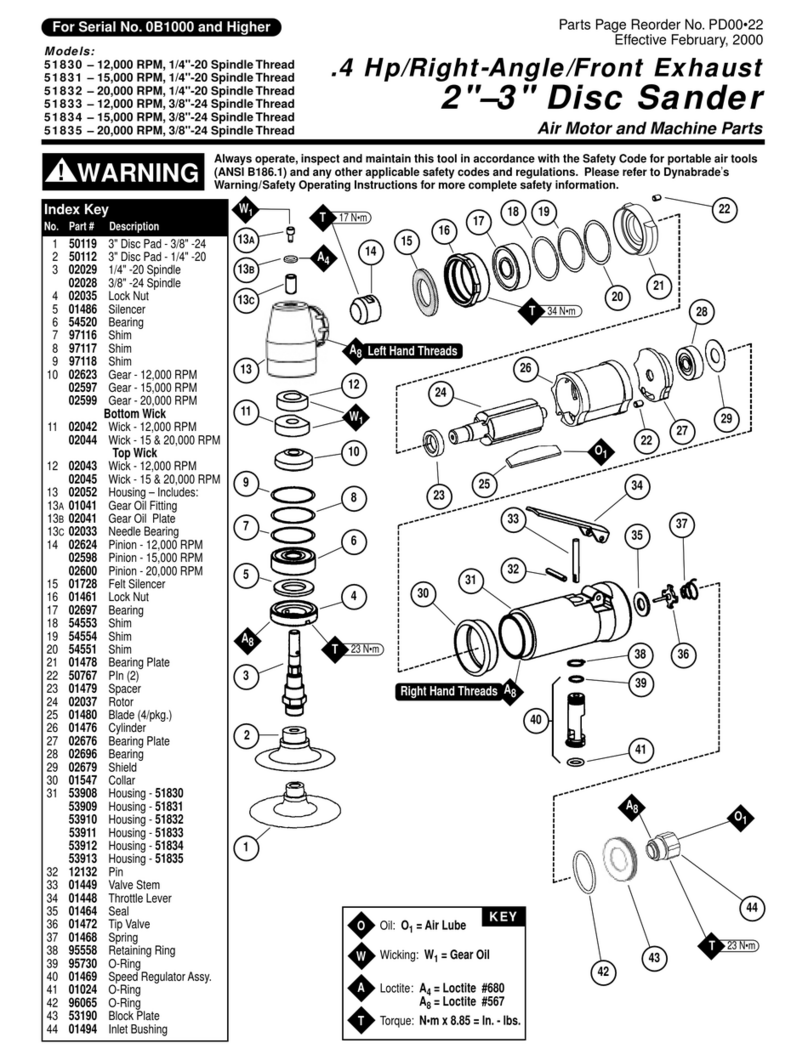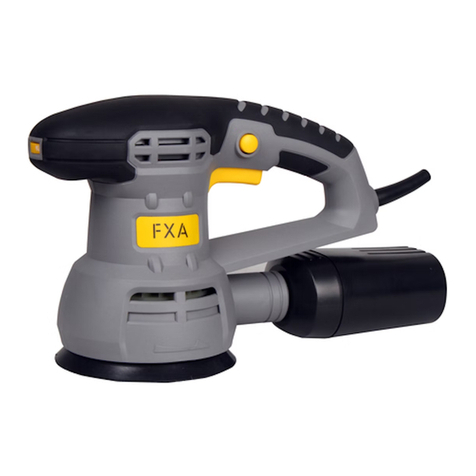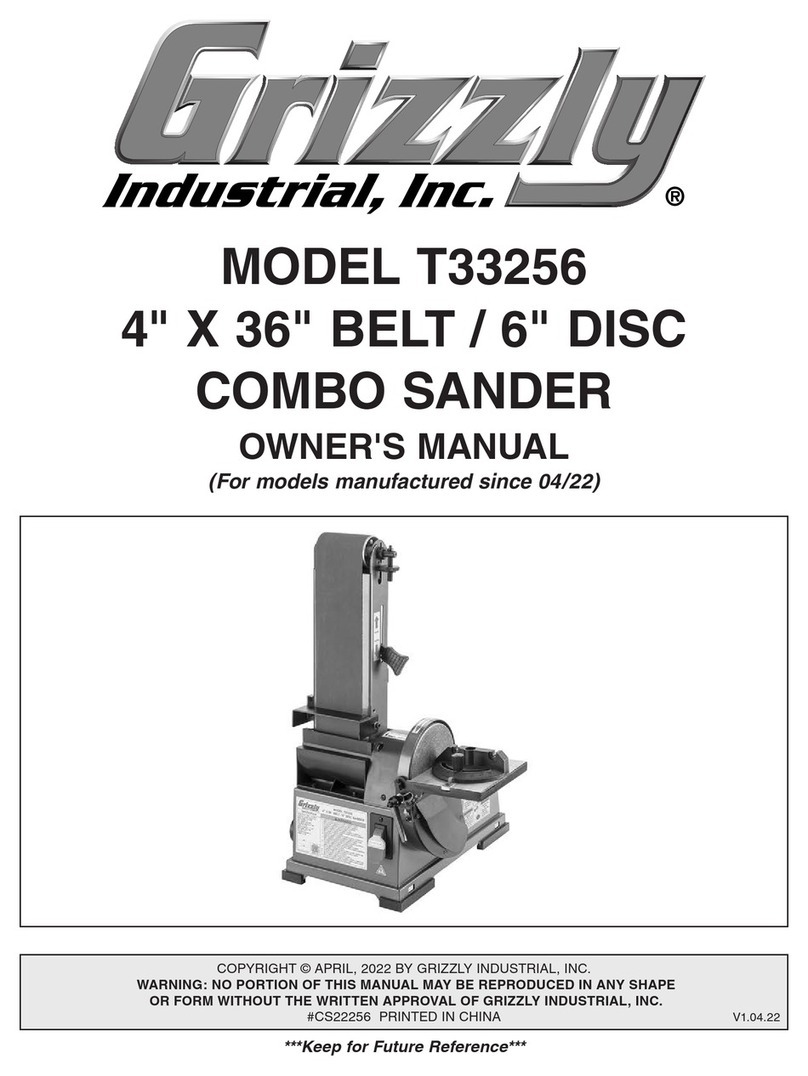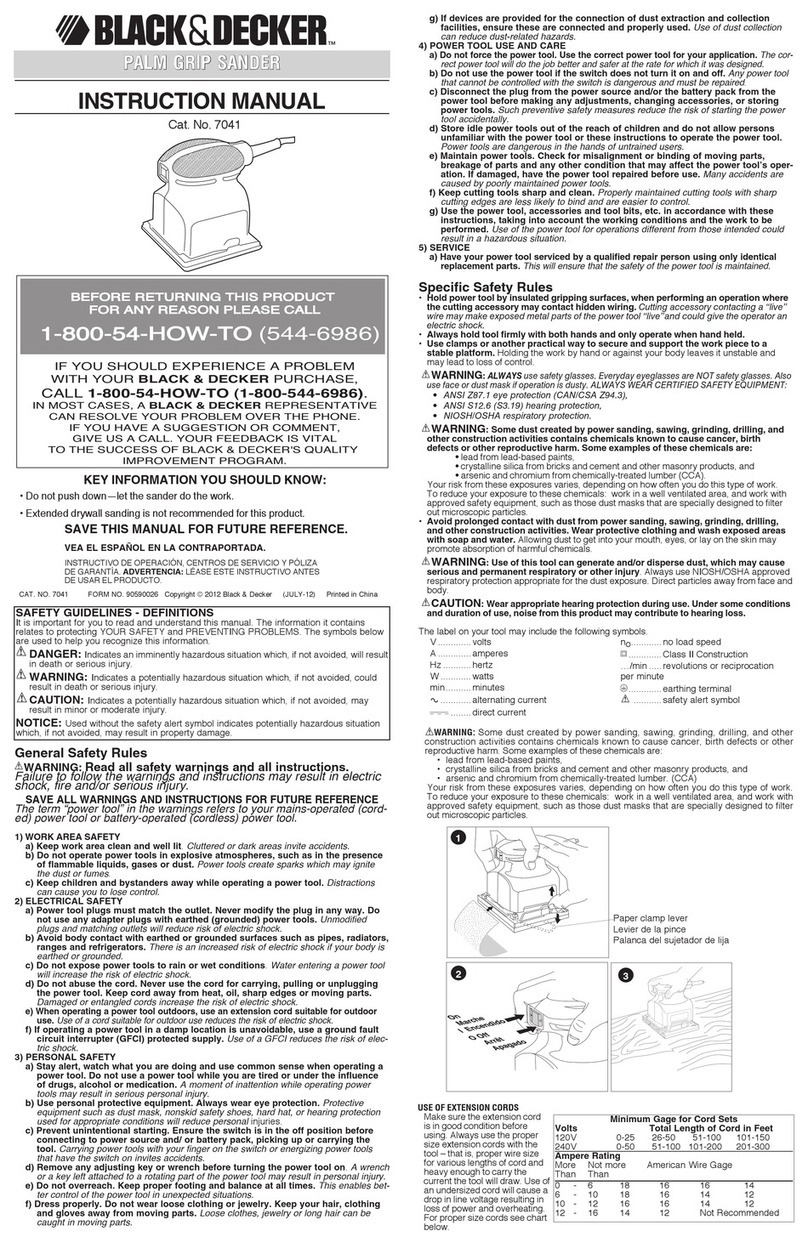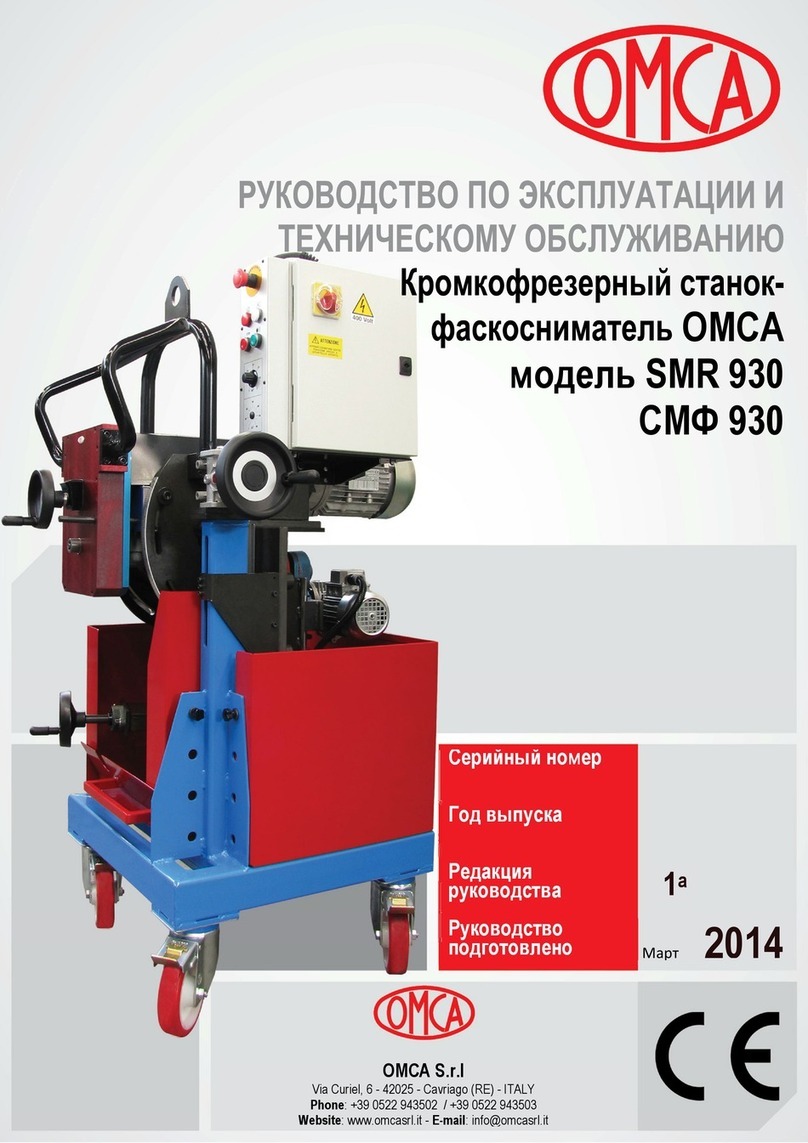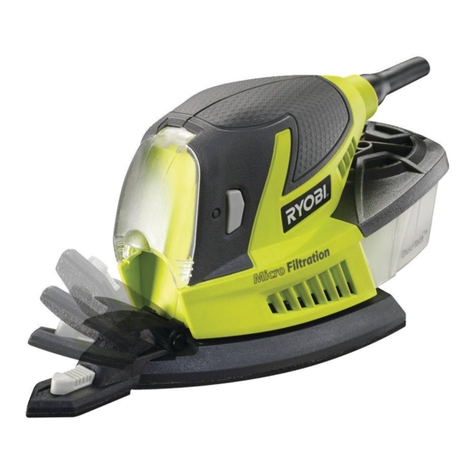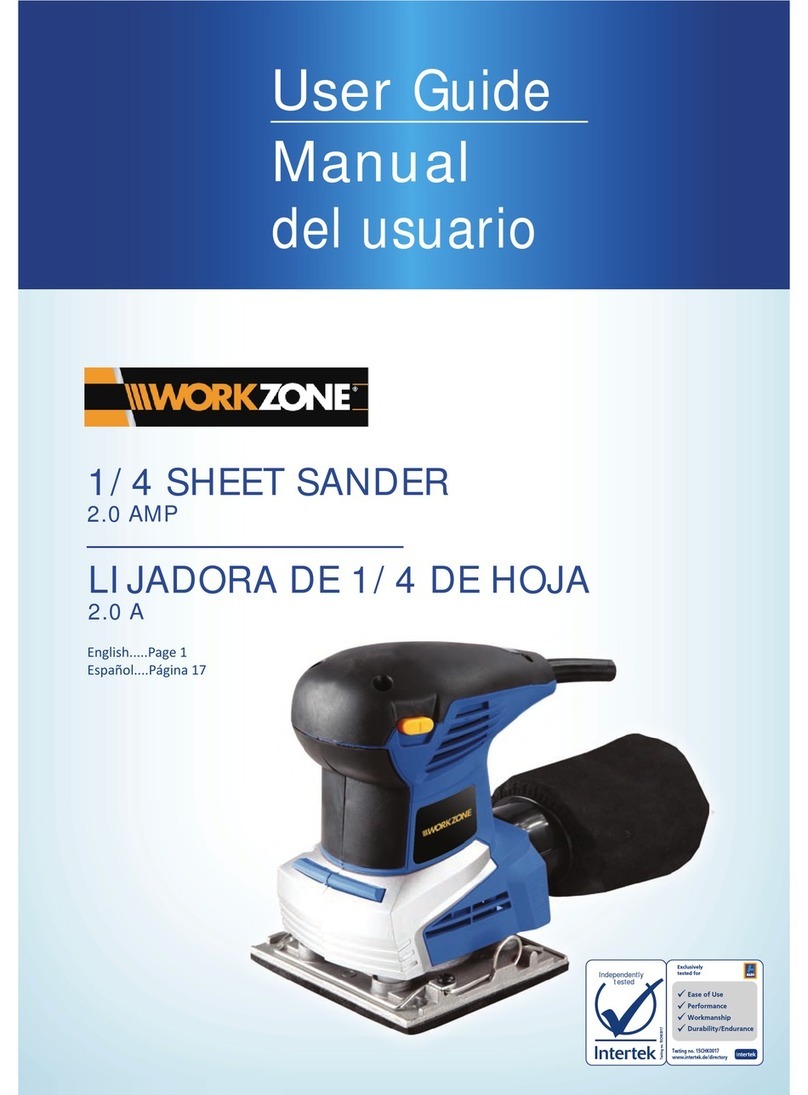6
Note:
The motor data mentioned above refers to
machines used in the Federal Republic of Germany.
Exported machines may have other data that can
be seen on the motor type designation plate.
TECHNICAL DATA
2
Note:
The values mentioned above are emission
values and must not represent safe workplace
values as well. Although a correlation exists
between emission levels and immission
levels, it is not always possible to determine
whether additional precautionary measures
are required. Factors that can have an effect
on the immission level existing at the
workplace include the duration of the effects,
the characteristics of the work area and other
sources of noise, e.g. the number of machines
and other processing operations in the
vicinity. The permissible workplace values
may also vary from country to country. This
information, however, is intended to enable
the user to estimate the dangers and risks
better.
Technical data
Manufacturer ....................................................... Eugen LÄGLER GmbH
Machine type..................................................... edge-sanding machine
Serial number .................................................................. see rating plate
Year of manufacture ...................................................... see rating plate
Motor type ........................................................................ universal motor
Voltage................................................................................................... 230 V
Frequency................................................................................... 50 / 60 cps
Output ............................................................................................... 1.35 kW
Fuse .......................................................................................................... 10 A
Insulation class ........................................................................................... F
Protection class................................................................................... IP 22
Protection system ...................................................................................... 2
Safety devices ......................................................... no-voltage release
.................................................................... thermal overload protection
Sanding disc diameter ..................................................... Ø 150 mm (6“)
Sanding disc diameter, corner attachment.......... Ø 61 mm (2 3/8“)
Sanding disc speed under load ............................. approx. 3100 rpm
Sanding disc speed under load,
corner attachment ...................................................... approx. 7750 rpm
Attachment height without wall-protecting roller ... 44 mm (1 3/4“)
Attachment height with wall-protecting roller ......... 58 mm (2 1/4“)
Height corner attachment................................................... 51.5 mm (2“)
Attachment length, short version ............................... 155 mm (6 1/8“)
Attachment length, long version............................... 315 mm (12 3/8“)
Length corner attachment ............................................ 225 mm (8 7/8“)
Overall height without dust bag ................................ 460 mm (18 1/8“)
Overall length without dust bag
- with short attachment ............................................... 460 mm (18 1/8“)
- with long attachment................................................. 620 mm (24 3/8“)
- with corner attachment ............................................ 530 mm (20 7/8“)
Overall width................................................................... 260 mm (10 1/4“)
Total weight....................................................................... 9.8 kg (21.6 lbs)
Dust emissions at workplace ............ < 0,2 mg/m3(0.0024 gr./cu.yd.)
Workplace-related noise emission values ........................ 86 dB (A)
Vibration total value ahv ..................................................................................................... < 2.5 m/s²
(measured at the handle)
Application purposes
Dry edge-sanding and stair-sanding of wooden floors and cork
floors.
Not to be used for any wet processing operations!


